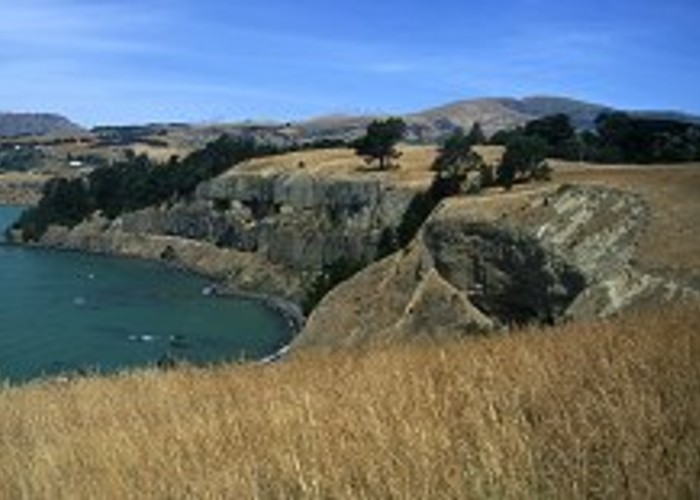There are, however, no quails, since the native quail Coturnix n. novaezealandiae became extinct in 1875.

Around 10 million years ago the Lyttelton volcano towered about 1500m above the surrounding area. Now the sea washes into the old crater and it is home to a busy port. In the 1999-2000 year it handled 1,528 ships, and 166,700 containers!
Quail Island, Otamahua, The Place Where Children Collect Seabirds’ Eggs, served as a food-gathering site for Maori. European settlers planted exotic grasses and utilised the land for grazing. Ballast rock for shipping was quarried in two small areas on the island. The island served for nearly twenty years as a leper colony, and was also used as a quarantine station for animals used in Antarctic expeditions. The hospital on Quail Island served to quarantine sufferers during the 1917 ‘flu pandemic. Since the Quarantine Station closed in 1956, the island has again been used for grazing, and the shell beds of Walkers Beach have been mined to produce poultry grit. An area of harbour just off the island has been used as a “ships’ graveyard”, and contains the remains of at least 10 vessels. The Island is now administered by the Department of Conservation.
The island shows evidence of almost all these oddly assorted activities, and there is an information centre with displays that document its interesting history. However probably the best things about Quail Island are its natural features: the stunning basalt cliffs along which you can see the seabirds wheeling, the beach layered with fascinating tiny shells, and the wide-open expanses of sky, water and distant hills that you can enjoy from the upper parts of the island. There is a planting programme in progress, which aims to restore some of the island’s original flora, and this is bound to greatly enhance the island’s appeal in the future. As it is, it’s a great place to feel like you’re a long way from the city…while actually being quite close.
There is public transport available to Lyttelton on the number 28 bus, taking around half an hour from the central city. The ferry service is provided by Black Cat from “B” Jetty, taking 10 minutes to the island. The ferry runs year round and over the warmer months the catamaran makes two trips per day, giving the option of staying a few hours or a full day. I’d recommend the full day option as there is a lot to do and there’s nothing like having to run to catch the last ferry home!

When you’re on the island there are a couple of walking options. There is a track taking you on a circuit right around the island which takes about 1½ hours, or you can opt for a shorter walk, using the path bisecting the island and connecting the sides of the circuit track to make a loop walk of either ½ or 1 hour, depending on which side of the island you choose. There are information boards marking points of interest and these are also detailed on a handy map, which is provided by Black Cat when you get on the ferry. Be sure to take some warm clothing, as the ferry trip can be surprisingly cool, even on a hot day. A raincoat might also be a good idea. I once spent a few hours sheltering from a rather energetic southerly storm and waiting for the ferry to arrive!
